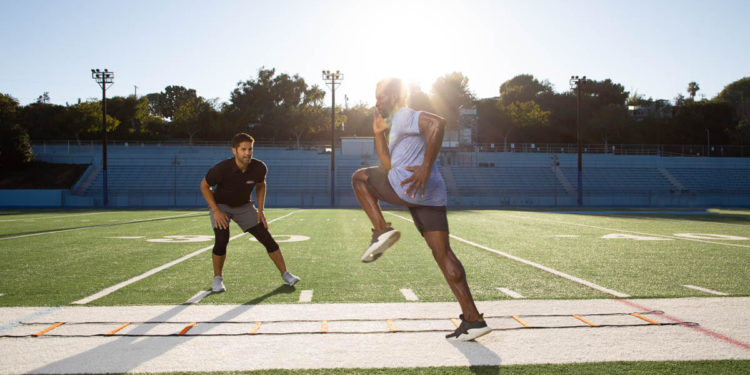By DR. Allison BRAGER
The expression “training around the clock” has more scientific merit than many would expect. Typically, it’s used to refer to the daily grind of balancing training with work, meal preparation for training, and finding time to recover.
For sleep scientists, we think of training around the clock as the literal biological clock, a unique series of biological factors that determine when we release certain wake-promoting hormones, recovery-promoting hormones, and sleep-promoting hormones.
OUR BIOLOGICAL CLOCK
These biological clocks are present in nearly every tissue of the brain and body. These clocks work together to help us perform at our best during some hours, to capitalize on sleep during other hours, and to quickly re-adjust to changes in the environment, such as flying to a new time zone.
The inner workings of these biological clocks can also help dictate whether someone is truly a morning person or a night owl. Endurance athletes may pre-select for their sport because their body clocks can tolerate the extremely early morning rise times, much like top-performing executives might pre-select their career due to having the short sleep gene. But beyond just being a genetic anomaly, recent research shows that endurance activities ought to be reserved for one time of the day and power activities for another time of the day.
CARDIO OR WEIGHTS?
So, what should you do first — cardio or weights — if you want to align peak performance with your biological clock? Cardio!
Rises in cortisol levels drive the act of waking up in the morning. This is part of the reason why it is so difficult to sleep past a particular hour if you are waking up in the west after just traveling from the east.
Rises in morning cortisol levels prime our body to be awake with the mid-morning peak in cortisol corresponding with peak mental alertness.
Cortisol also allows for the recruitment of energy reserves, glucose, and especially fats, making cardio much easier to complete and making it much easier to push to a higher level of performance aerobically.
Weights, on the other hand, ought to be reserved for the late afternoon. At this time, levels of norepinephrine and adrenaline-driven by time of day have been shown to prime for peak muscle power and muscle recruitment. In fact, in a study of elite weightlifters, it took a performance-enhancing stimulant (caffeine) to get lifting performance to afternoon levels in a sample of athletes lifting in the morning.
RISK FOR INJURY
Another point to consider is how biological clocks can drive risk for injury.
In general, we have two high points and two low points in the day when fatigue is at its highest or lowest. These high points and low points coincide with peak and troughs in core body temperature, respectively. Mental acuity is required to execute highly coordinated movements with a higher risk of injury, so it’s understandable why this relationship with time of day matters for the top-performing athlete.
To date, there are some data trends from the regular season of the National Football League showing that risk for injury is highest when mental fatigue due to drops in core body temperature is highest compared to any other time of the day.
These data trends also reveal that west coast teams tend to have better regular-season winning percentages due to playing fewer games in their biological afternoon and more evening games when we experience a “second wind” in alertness/motivation.
If we want to be hyper-analytical, then we can also consider how being a morning person or evening person affects the dynamics, performance, and winning percentages of a group.
Data on this topic has been collected in field sport athletes (rugby, field hockey, and soccer) at both elite and amateur levels.
The consensus is a healthy dose of variability in peak morning players versus peak evening players is okay for as long as it doesn’t exceed 25%. Thus, either have a group class or team where 75% self identify as morning larks or night owls for maximal success.
CONCLUSION
To conclude, the concept of training around the clock is a concept of training smarter, not harder.
By prioritizing workouts and recovery around your pre-programmed biological needs, the entire human physiological system is less stressed in general. Your biological clocks will not have to keep adjusting and re-adjusting to sleeping at a non-optimal time, training at a non-optimal time, and eating at a non-optimal time. Your biological clocks will also thank you if you keep a consistent routine.
Consistency helps keep the biological clocks in sync, so the act of releasing hormones, repairing muscle, and recruiting energy stores is expected, prioritized, and executed to the fullest human potential.
REFERENCES
A. J. Brager, R. M. Mistovich, Game times and higher winning percentages of west coast teams of the National Football League correspond with reduced prevalence of regular season injury. J. Strength Cond. Res. 31, 462-467 (2017).
E. Facer-Childs, R. Brandstaetter, The impact of circadian phenotype and time since awakening on diurnal performance in athletes. Curr. Biol. 25, 518-522 (2015).
R. Mora-Rodríguez, J. García Pallarés, Á. López-Samanes, J. F. Ortega, V. E. Fernández-Elías, Caffeine ingestion reverses the circadian rhythm effects on neuromuscular performance in highly resistance-trained men. PLoS ONE. 7, e33807 (2012).

